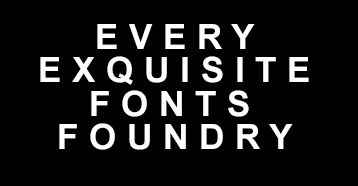How brands can leverage AI with the right creative direction.
- Sanjana Prabhakar

- Dec 31, 2024
- 4 min read
Updated: Jan 5

As you scroll through your Instagram feed, you’ve likely come across some stunning graphics and videos that feel otherworldly—sometimes mesmerising, other times just a bit awkward. Major brands like Nike, Chanel, and Jacquemus have captivated us with their cinematic visuals, often leaving us wondering: Are these scenes real, or are they too extraordinary to be anything but a digital creation?
Welcome to the world of AI and CGI, which have revolutionised the graphic design and cinematic industry. Today, we’re seeing breathtaking cinematic videos created using AI softwares. These advancements have empowered brands to showcase their concepts in bold, striking ways—delivering grand visuals at a fraction of the cost and time it would take to create such scenes in the real world.
Whether you're a global brand or a budding startup, AI tools can be leveraged to create the right communication with the appropriate creative direction. By defining the visuals you're aiming for and understanding how to combine various software tools, you can create impactful images and videos tailored to your brand’s needs. AI offers immense value to brands by providing efficiency, time savings, and cost-effectiveness.
For example, instead of organising an entire lifestyle shoot—which typically involves coordinating numerous experts across locations, lighting, costumes, photography, and models—AI allows you to achieve similar results with the right combination of tools and inputs. While these tools can certainly be used to create high-end, cinematic visuals that
may require larger budgets for custom technology, they can also be a game-changer for emerging brands with limited resources, offering impressive results without the heavy price tag and in a much, much lesser time and all done without moving around for the right location!
Here are a few ways we've been leveraging this technology to help our brands shine across various mediums, whether it's their website or social media platforms.
For the project NapTapGo, we utilise AI to showcase various aspects of their service in a minimal yet highly effective manner. Traditionally, these visuals would require a 3D artist to spend hours creating each detail, adding significant time and cost. By using AI tools, we are able to achieve the same results in a fraction of the time, providing greater efficiency and value for the client. For the same client, we also developed a campaign called "Reimagine Pod Hotels in India," where we took a more futuristic approach to the visuals. The aim was to communicate a clear message of how pod hotels could change the way we see stays in India, transforming this idea into visually compelling graphics. This allowed the brand to showcase its vision for capsule pod hotels with striking, imaginative imagery that was both visually captivating and highly communicative. For And Design Co, which is an interior architecture brand based out of Mumbai, these tools have helped us to create realistic 3D renders of various interior and architectural elements, streamlining the design process and enhancing the client's visual presentations.
In another project, we used AI to generate realistic lifestyle imagery for Wookies brand advertisements, achieving results that closely resembled a real-time photoshoot. Many brands entering the market with limited budgets can really benefit from AI tools, as they allow us to deliver high-quality results without compromising on the final product. For this project, our goal was to make sure the images resonated with the audience, helping them form an emotional connection with the brand.

These are just a few examples, but the potential of AI in design and content creation is truly vast—AI is now even being used to produce entire short films. However, it's crucial to understand that, at this stage, AI doesn't "imagine" on its own. Instead, it operates as an algorithm that processes and organizes the input you provide. Essentially, it serves as a tool that helps bring your ideas to life, refining and enhancing concepts in ways that would otherwise be time-consuming or expensive.
This brings me back to the point I made earlier: the results AI produces can be either mesmerizing or awkward, depending on how it’s used. While the tool is widely available for anyone to experiment with, and people are creating anything that sparks their curiosity, the real magic happens when human creativity aligns with AI’s technical capabilities. AI can elevate ideas, but it’s the creative vision that ultimately guides and shapes the outcome. Knowing where and how to apply these tools is key to achieving the best results.
Brands can definitely benefit from these evolving technological advancements, but none of the examples I mentioned in this article would have been possible with such efficiency without a strong creative vision to guide the process. The quality of the output is ultimately shaped by the creative expertise and insight of the designer or agency directing the AI. While AI has expanded the creative playground, offering us a broader space to explore and experiment, it's crucial to understand the context in which we use these tools. AI platforms can be incredibly effectual in bringing design or branding concepts to life, turning your imagination into a tangible visual representation fleetingly if you have mastered the tool. However, knowing when and how to use these tools is important.
As we look ahead to the new year, we're eager to continue exploring these emerging technologies. We have some exciting projects in the pipeline, including cinematic AI videos we've recently created, and we're eager to produce even more exceptional cinematic content for our brands— graphics and videos that deliver powerful and impactful communication.





Comments